Improved polarized 2x2 MIMO spatial multiplexing method for DVB-NGH system
Bạn đang xem bản rút gọn của tài liệu. Xem và tải ngay bản đầy đủ của tài liệu tại đây (1.19 MB, 5 trang )
This article has been accepted for inclusion in a future issue of this journal. Content is final as presented, with the exception of pagination.
IEEE TRANSACTIONS ON BROADCASTING
1
Improved Polarized 2x2 MIMO Spatial Multiplexing
Method for DVB-NGH System
Jae Hyun Seo, Tae Jin Jung, Heung Mook Kim, and Dong Seog Han
Abstract—Recently terrestrial digital broadcasting systems have experienced a growth with the demand of high-data rate. In order to meet
such demand, the multiple-input multiple-output (MIMO) technology has
received wide attention. This paper proposes a pre-coding method, which
provides high-space channel correlation for the improved performance
over terrestrial broadcasting channels when the MIMO spatial multiplexing (SM) is adopted for digital video broadcasting-next generation
handheld systems. When signals with two different modulation orders
are transmitted through two antennas, a method that is based on nonuniform power is also proposed for improved reception performance. To
optimize the proposed method, phase shifting values for the pre-coding
method and appropriate non-uniform power ratio are obtained. These
obtained parameters are applied to a terrestrial broadcasting system, and
then the performance improvement over the conventional SM is shown
through computer simulations.
Index Terms—DVB-NGH, DVB-T2, OFDM, MIMO, terrestrial,
spatial multiplexing.
I. I NTRODUCTION
N RECENT terrestrial digital broadcasting systems, there has been
effort to provide a 3DTV service in addition to multiple channel
SDTV and HDTV. Moreover, due to the recent demand of UHDTV
service, it is required to provide higher data rates to provide these
services. In order to meet such demand, transmission technologies
that provide spectrum efficiency within limited bandwidth, and the
multiple-input multiple-output (MIMO) technology has been considered as one of the tractable methods. However, current broadcasting
systems do not provide a return channel as LTE, WiMAX, and
other wireless communication systems, and their transmitters cannot
receive channel information from receivers [1]. Furthermore, because
terrestrial broadcasting systems provide wide coverage areas in general, most channels include LOS (line of sight), which has high space
channel correlation.
The DVB-T2 (digital video broadcasting-terrestrial 2nd generation)
system, the second generation terrestrial DTV standard in Europe,
has adopted a variety of technologies to increase data rates over
the first generation DVB-T system. One simple technologies is to
increase modulation orders of OFDM systems for improved spectrum efficiency. There are other technologies such as increasing the
I
Manuscript received March 25, 2015; revised June 23, 2015; accepted
July 13, 2015. This work was supported by the ICT Research and
Development Program of MSIP/IITP “Development of Service and
Transmission Technology for Convergent Realistic Broadcast” under Grant
R0101-15-294.
J. H. Seo and H. M. Kim are with the Department of Broadcasting
Systems Research, Electronics and Telecommunications Research Institute,
Daejeon 305-700, Korea.
T. J. Jung is with the School of Electronics and Computer Engineering,
Chonnam National University, Gwangju 500-757, Korea.
D. S. Han is with the School of Electronics Engineering, Kyungpook
National University, Daegu 702-701, Korea (e-mail: ).
Color versions of one or more of the figures in this paper are available
online at .
Digital Object Identifier 10.1109/TBC.2015.2459659
FFT size given the same length of guard interval, decreasing the rate
of pilot or training signal, and adopting channel coding methods that
provide high efficiency [2]. In the DVB-T2 system, the modulation
order is increased up to 256-QAM, the FFT size is increased up
to 32k, and the rate of pilot is reduced down to 1%. In addition,
the new channel coding methods, the LDPC and BCH codes, are
adopted, so that the reception performance and spectrum efficiency
are improved over the past standard using the convolutional and
Reed-Solomon codes [3]. Based on the ATSC (advanced television
systems committee) system, an ADT (augmented data transmission)
system has been introduced in order to increase data rate of the
existing system. By using the hierarchical modulation, DTV signal
cancellation, and advanced error correction code, the ADT system can offer additional data capacity of up to a few Mbps. This
system does not require additional RF spectrum for the increased
data rate, but also guarantee backward compatibility with legacy
receivers [4].
The MIMO technology can be another option that provides
additional spectrum efficiency within limited bandwidth, and the
spatial multiplexing (SM) method is used in general in order to
increase data rates. After the DVB-T2 system has been developed,
research on the MIMO technology based on the DVB-T2 system has been continued. Based on the polarized 2x2 MIMO,
the efficient transmission method for fixed reception and the
channel estimation method using polarized diversity have been
presented [5]. In the DVB-T2 system, the MIMO SM method
provided the better performance than the single-input singleoutput (SISO) under the ideal channel environment [6]. Recently,
the DVB-NGH (next generation handheld) system, which adopts
the MIMO technology as a DVB-T2 based standard, used the SM
method based on the polarized 2x2 MIMO in order to increase
data rates rather than the diversity performance improvement [7].
Furthermore, for reducing complexity of receiver, MIMO
decoder simplification method has been presented in DVB-NGH
systems [8].
This paper presents a transmission method that increases
data rates for terrestrial broadcasting systems. An improved polarized 2x2 MIMO SM method is proposed for DVB-NGH system,
which has adopted a MIMO technology as a terrestrial broadcasting standard. Using the proposed precoding method, the performance
degradation of the conventional SM method in terrestrial channels that contained LOSs with high space channel correlation can
be prevented. Furthermore, when two different modulation orders
between two antennas are used for polarized 2x2 MIMO systems,
the performance can be improved for the designated channel by
using the unequal power transmission. This unequal power precoded 2x2 MIMO SM method was also proposed in DVB-NGH
standardization by Electronics and Telecommunications Research
Institute (ETRI) [9].
In chapter II, the conventional MIMO SM method is presented.
In chapter III, the proposed MIMO SM method is explained.
Simulation results which provide the improved performance are
shown in chapter IV, and conclusion is drawn in chapter V.
0018-9316 c 2015 IEEE. Personal use is permitted, but republication/redistribution requires IEEE permission.
See for more information.
This article has been accepted for inclusion in a future issue of this journal. Content is final as presented, with the exception of pagination.
2
Fig. 1.
IEEE TRANSACTIONS ON BROADCASTING
Block diagram of conventional 2x2 MIMO SM for OFDM system.
II. C ONVENTIONAL MIMO SM M ETHOD
The MIMO SM method that increases the multiplexing rate of
information is to divide the information symbols between the transmit antennas. Fig. 1 shows a block diagram of 2x2 MIMO SM based
on a general OFDM system. Note that the 2x2 MIMO SM transmits
two channel encoded signals through two different antennas and spatial multiplexing. For example, when QPSK-modulated symbols are
transmitted through two antennas with the same rate as using one
antenna, the transmission with 2 bits can be increased to the transmission with 4 bits, which provides doubled transmission capacity.
Therefore, spectral efficiency is defined by 6 bpc (bits per cell, as the
number of bits assigned per subcarrier), 8 bps, and 10 bpc. The signal constellations for two antennas are QPSK/16QAM for the case of
6 bpc, 16QAM/16QAM for the 8 bpc, and 16QAM/64QAM for the
case of 10 bpc. Especially, DVB-NGH provides implementation guide
of a polarized 2x2 MIMO system as an optional profile in order to
exploit the diversity and capacity advantages made possible by the use
of multiple transmission elements at the transmitter and receiver [10].
Also, DVB-NGH is the first broadcasting system to exploit the diversity in the time, frequency and space domains by incorporating at the
physical layer long TI (time interleaver), TFS (time frequency slicing)
and polarized 2x2 MIMO [11], [12].
The condition of correlation in the MIMO channel due to LOS
channel, which happens in terrestrial broadcast transmissions, is
specially affected for the MIMO SM. Fig. 2 shows the signal constellations of transmitted and received antennas when the 2x2 MIMO
channel correlation is 1 and the case of 6 bpc, QPSK/16-QAM signals are transmitted using the MIMO SM method. In this figure, the
QPSK/16-QAM signal constellations are observed at the transmitted
antenna, whereas at the received antenna, the QPSK/16-QAM signals
are duplicated, so that 64 constellation points are observed. The distances of received signal between constellation points are decreased
by MIMO channel environments. In order to separate the received
signals from two antennas, the GC (Golden code) can be used for
the improved reception performance, but its complexity is quite large
for implementation [13]. The decoding complexity of SM is proportional to O(M2 ) while that of GC is proportional to O(M 4 ), where
M is cardinality of the signal constellation (e.g., M = 4 for QPSK).
III. P ROPOSED MIMO SM M ETHOD
In order to improve the reception performance, this paper proposes the MIMO SM method based on a precoder, which shifts
phases of modulated signals transmitted through two antennas. Using
this precoder, average distance between such shifted constellations at
a receiver can be increased.
Furthermore, when signals from two antennas have different
modulation orders, unequal power ratio is used for performance
improvement. With different modulation orders, the different powers from a transmitter can result in the increased average distance
Fig. 2. QPSK/16QAM signal constellations of transmitted and received
antennas when channel correlation = 1.
between the combined constellations in received antenna. For example, in the case of two transmitted antennas, if the signal power of
higher modulation order is larger than that of lower modulation order,
the reception power can be improved. Fig. 3 shows the proposed
unequal power precoded 2x2 MIMO SM.
First of all, the unequal power input vector X can be expressed as
X = x1 , x2
T
(1)
and unequal power output vector Y can be expressed as
Y = y1 , y2
T
=
X
(2)
where
is defined by (3) and this means power ratio between two
transmitted antennas.
√
α √ 0
(3)
=
0
1−α
This means that the two transmitted antennas produce the equal
power when α = 1/2. The precoder output vector R can be
expressed as
R = r1 , r2
T
=
Y
(4)
where
is defined by (5) and this equation shifts the signal phase
of each transmitted antenna.
=
cos θ
sin θ
− sin θ
cos θ
(5)
From (1) ∼ (5), the transmitted signals r1 and r2 can be
expressed as
√
α √ 0
x1
cos θ − sin θ
r1
=
(6)
sin θ
cos θ
r2
0
1 − α x2
IV. S IMULATION R ESULT
First of all, simulation was conducted to obtain optimal values of
precoder phase shifting and unequal power ratio. In this simulation,
Ricean channel, which has infinite K value as LOS channel environment, was assumed. Figs. 4 and 5, average uncoded BERs were measured when rotation angle of precoder is changed from 0 to 90 degrees
with ideal antenna. In this case, ideal antenna conditions are assumed
and channel matrix H can be expressed as
H=
h1,1
h2,1
h1,2
h2,2
=
ejθ1,1
ejθ2,1
ejθ1,2
ejθ2,2
(7)
where θ1,1 , θ2,1 , θ1,2 , θ2,2 are adopted by random phase.
In addition, the performance was measured when the α values,
which represent unequal power ratio, were changed to 1/4, 1/3,
This article has been accepted for inclusion in a future issue of this journal. Content is final as presented, with the exception of pagination.
IEEE TRANSACTIONS ON BROADCASTING
Fig. 3.
3
Block diagram of unequal power-precoded 2x2 MIMO SM system.
Fig. 4. Performances of average uncoded BER according to rotation angles
of precoder and power ratio when SNR = 7 dB.
Fig. 6.
Minimum distances according to channel phase differences.
another result that the performance of average uncoded BER was
the best when α = 1/3 and the rotation angle of precoder was
0 degree. In this simulation, we obtained the better performance only
using unequal power method when polarized 2x2 MIMO SM system
adopted different modulation orders.
For the second simulation, minimum distances at the received
antenna were computed in the cases of conventional SM, precoded SM, and unequal power(UP)-precoded SM methods. Precoded
SM shifts the signal phase of each transmitted antenna in (6) and
UP-precoded SM is additionally including unequal power ratio in (3).
In this simulation, polarized 2x2 MIMO channel parameters are
defined by
θdiff = θ1,1 − θ1,2 or θ2,1 − θ2,2
Fig. 5. Performances of average uncoded BER according to rotation angles
of precoder and power ratio when SNR = 10 dB.
1/2, 2/3, and 3/4. Note that α = 1/2 denotes the same signal
power between QPSK and 16-QAM at each transmitted antenna
and α = 1/3 denotes doubled 16-QAM signal power compared
to QPSK. Fig. 4 shows average uncoded BERs according to different rotation angles of precoder when SNR = 7 dB. In the case of
α = 1/3, the performance of average uncoded BER was the best
when the rotation angles of precoder were 20∼30 or 60∼70. In
the other case, Fig. 5 shows average uncoded BERs according to
different rotation angles of precoder when SNR = 10 dB. This simulation result shows that the performance of average uncoded BER
was the best when the rotation angles of precoder were 30∼60 and
also α = 1/3. We find optimal values when α value was 1/3 and
the rotation angle of precoder was about 30 degree. Also we found
(8)
where θdiff is defined by (8) and this means channel phase difference.
Fig. 6 shows the minimum distances according to channel phase
difference, θdiff between h1,1 and h1,2 . When the channel phase
differences were changed from 0 to 90 degrees, the UP-precoded
SM method had higher average minimum distance than the SM and,
precoded-SM from combined signal constellations at the received
antenna. Partially, precoded-SM method had higher minimum distance than the UP-precoded SM method in channel phase differences
ranges were 30∼60 degrees. Table I shows the numerical results of
minimum and average values of minimum distances for each method.
According various channel phase difference, the minimum value of
conventional SM method had smaller than that of the other methods.
Also, compared to the conventional SM method, the precoded SM
method increased the averaged minimum distance by about 44%,
and the UP-precoded SM method had 58% increment. Therefore, the
UP-precoded SM method achieved the best performance in minimum
distance of combined signal constellations at the received antenna.
These results show the optimal values of precoder’s phase shift and
This article has been accepted for inclusion in a future issue of this journal. Content is final as presented, with the exception of pagination.
4
IEEE TRANSACTIONS ON BROADCASTING
TABLE I
M INIMUM D ISTANCE FOR E ACH M ETHOD
TABLE III
P OWER D ELAY P ROFILE OF H ELSINKI 2 O UTDOOR C HANNEL
Fig. 7. QPSK/16QAM signal constellations from transmitted and received
antennas when channel correlation = 1, α = 1/3, θ = 30◦ .
TABLE II
S IMULATION PARAMETERS
Fig. 8. Average uncoded BER performances of conventional SM, precoded
SM and UP-precoded SM (SNR range = 6.5 ∼ 8.5 dB).
was assumed, and channel parameters were Ricean factor K = 1,
XPD = 6 dB, and Doppler frequency = 33.3 Hz. This Doppler frequency in Helsinki2 outdoor channel is 33.3 Hz, which corresponds
to 60 km/h for a RF carrier of 600 MHz. Note that XPD (cross-polar
discrimination) is the ratio between the averaged received powers of
co-polarization and cross-polarization, which is defined by
power ratio on each modulation order under the simulation configuration. For example, phase shift and power ratio can be slightly
changed by various simulation parameters [14].
Based on the above two simulation results, we have new signal
constellations from transmitted and received antennas with precoder
and unequal power terms. Assuming that QPSK and 16-QAM signals are transmitted through two antennas based on the proposed
MIMO SM method named by UP-precoded SM, Fig. 7 shows the
signal constellations of transmitted and received antennas when the
correlation of 2x2 MIMO channel is 1, the precoder phase shifts are
30 degrees and unequal power ratio α = 1/3. As shown in the figure,
64 constellation points in the transmitted antennas are represented by
r1 and r2 as in (4). Also, another 64 constellation points are shown
in the received antennas. In the transmitted antenna, 64 constellation
points are shown, whereas in the received antenna it can be shown
that the distance between constellations are increased.
Following the previous results, the conventional SM, precoded SM
and UP-precoded SM methods were simulated. Simulation parameters are shown in Table II. The transmission parameters were based
on the DVB-T2 system, and hence, 4K FFT size, 1/4 guard interval, and LDPC code (frame size = 16200 bits, code rate = 4/9, 2/3)
were used. For the modulation, QPSK and 16-QAM were used at
the two transmitted antennas. For the MIMO channel model of terrestrial broadcasting environment, the Helsinki2 outdoor reception
XPD = 10 log10
h1,1
h2,2
= 10 log10
h1,2
h2,1
(dB).
(9)
Table III shows the Helsinki2 outdoor reception channel profile
used in this simulation. This profile consists of 8 multipath and the
relative power magnitudes denote h1,1 , h2,2 gains in the polarized
2x2 MIMO channel [15].
The average coded BER performance for the conventional SM, precoded SM, and UP-precoded SM methods are shown and compared
in Figs. 8 and 9. For the precoder, θ = 30◦ was used by the precoded
SM and UP-precoded SM. For the unequal power, α = 1/3 was used
by the UP-precoded SM. The power of 16-QAM signals was twice
bigger than that of QPSK signals.
Fig. 8 shows the average uncoded BER performance of the conventional SM, precoded SM, and UP-precoded SM when the SNR
range was 6.5∼8.5 dB. The conventional SM and precoded SM
performed similarly, but the UP-precoded SM method shows better
uncoded BER performance than the others. Fig. 9 shows the average coded BER performance of the conventional SM, precoded SM,
and UP-precoded SM when the code rate was 4/9. The conventional
SM and precoded SM performed similarly, and the UP-precoded
SM method performed slightly better than the others. In the case
of UP-precoded SM, the SNR was 0.2 dB lower than the conventional SM at BER = 10−4 . Hence, given the conventional SM,
This article has been accepted for inclusion in a future issue of this journal. Content is final as presented, with the exception of pagination.
IEEE TRANSACTIONS ON BROADCASTING
5
and precoded SM performed similarly, but the UP-precoded SM
method shows better uncoded BER performance than the others.
Fig. 11 shows the average coded BER performance of the conventional SM, precoded SM, and UP-precoded SM when the code rate
was 2/3. In comparison with the conventional SM, the precoded SM
and UP-precoded SM provided the gains of 0.1 dB and 0.4 dB,
respectively, at BER = 10−4 . Therefore, precoded SM slightly outperformed the conventional SM, and therefore, we could improve
additionally SNR gain about 0.2∼0.4 dB by using the unequal power
transmission.
V. C ONCLUSION
Fig. 9. Average coded BER performances of conventional SM, precoded
SM and UP-precoded SM (code rate = 4/9).
This paper presented the SM method to increase transmission
capacity when the MIMO was used for terrestrial digital broadcasting.
Especially, when different modulation orders were applied to a polarized 2x2 MIMO SM transmitting through two antennas, the proposed
method improved the reception performance by using the unequal
power ratio. In this proposed method, when QPSK and 16-QAM
were used with 30 degree phase shift and the power of 16-QAM
signals was twice bigger than that of QPSK signals, the SNR performance was improved by 0.2∼0.4 dB compared to the conventional
SM method.
R EFERENCES
Fig. 10. Average uncoded BER performances of conventional SM, precoded
SM and UP-precoded SM (SNR range = 10.5 ∼ 12.5 dB).
Fig. 11. Average coded BER performances of conventional SM, precoded
SM and UP-precoded SM (code rate = 2/3).
the use of unequal power provided further gains compared to the use
of precoder. In addition, Fig. 10 shows the average uncoded BER performance of the conventional SM, precoded SM, and UP-precoded
SM when the SNR range was 10.5∼12.5 dB. The conventional SM
[1] J. Paulraj, D. A. Gore, R. U. Nabar, and H. Bolcskei, “An overview of
MIMO communications: A key to gigabit wireless,” Proc. IEEE, vol. 92,
no. 2, pp. 198–218, Feb. 2004.
[2] L. Vangelista et al., “Key technologies for next-generation terrestrial digital television standard DVB-T2,” IEEE Commun. Mag., vol. 47, no. 10,
pp. 146–153, Oct. 2009.
[3] Frame
Structure
Channel
Coding
and
Modulation
for
a Second Generation Digital Terrestrial Television Broadcasting
System (DVB-T2), ETSI EN 302 755, v1.2.1, Oct. 2010.
[4] S. I. Park, H. Lim, H. M. Kim, Y. Wu, and W. Oh, “Augmented
data transmission for the ATSC terrestrial DTV system,” IEEE Trans.
Broadcast., vol. 58, no. 2, pp. 261–268, Jun. 2012.
[5] C. Gomez-Calero, L. C. Navarrete, L. de Haro, and R. Martinez,
“A 2x2 MIMO DVB-T2 system: Design, new channel estimation method
and measurements with polarization diversity,” IEEE Trans. Broadcast.,
vol. 56, no. 2, pp. 184–192, Jun. 2010.
[6] I. Kang et al., “Performance of the DVB-T2 system with MIMO spatial
multiplexing,” in Proc. IEEE Int. Symp. Intell. Signal Process. Commun.
Syst. (ISPACS), Chiang Mai, Thailand, Dec. 2011, pp. 1–4.
[7] Digital Video Broadcasting, Next Generation Broadcasting System to
Handheld, Physical Layer Specification (DVB-NGH), DVB Doc. A160,
Nov. 2012.
[8] D. Perez-Calderon, V. Baena-Lecuyer, J. Chavez, A. C. Oria, and
J. G. Doblado, “Simplified detection for DVB-NGH MIMO decoders,”
IEEE Trans. Broadcast., vol. 61, no. 1, pp. 84–90, Mar. 2015.
[9] J. H. Bae et al., “ETRI’s Unequal Tx Power MIMO SM and Simulation
results,” DVB Technical Module Sub-Group on Next Generation
Handheld, Tech. Rep. TM-NGH406, Sep. 2010.
[10] D. Gómez-Barquero, C. Douillard, P. Moss, and V. Mignone,
“DVB-NGH: The next generation of digital broadcast services to handheld devices,” IEEE Trans. Broadcast., vol. 60, no. 2, pp. 246–257,
Jun. 2014.
[11] D. Gozálvez, D. Gómez-Barquero, D. Vargas, and N. Cardona,
“Combined time, frequency and space diversity in DVB-NGH,” IEEE
Trans. Broadcast., vol. 59, no. 4, pp. 674–684, Dec. 2013.
[12] D. Vargas, D. Gozálvez, D. Gómez-Barquero, and N. Cardona, “MIMO
for DVB-NGH, the next generation mobile TV broadcasting,” IEEE
Commun. Mag., vol. 57, no. 7, pp. 130–137, Jul. 2013.
[13] J.-C. Belfiore, G. Rekaya, and E. Viterbo, “The golden code:
A 2x2 full-rate space-time code with nonvanishing determinants,” IEEE
Trans. Inf. Theory, vol. 51, no. 4, pp. 1432–1436, Apr. 2005.
[14] S. Moon, “Equal/Unequal power transmission for Dual polar MIMO,”
DVB Technical Module Sub-Group on Next Generation Handheld,
Tech. Rep. TM-NGH1047, Jun. 2011.
[15] M. Petrov et al., “Configuration for Multi-Path MIMO Channel
Simulations in NGH,” DVB Technical Module Sub-Group on Next
Generation Handheld, Tech. Rep. TM-NGH641r8, Feb. 2011.


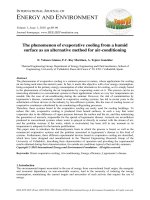
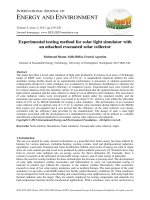

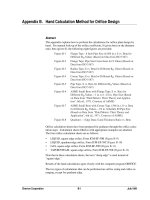
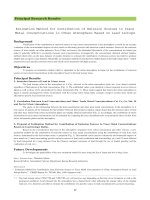

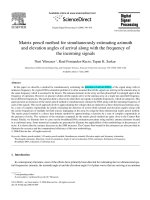
![Standard Test Method for Compressive Strength of Hydraulic Cement Mortars (Using 2-in. or [50-mm] Cube Specimens)](https://media.store123doc.com/images/document/14/rc/yi/medium_yil1395845738.jpg)